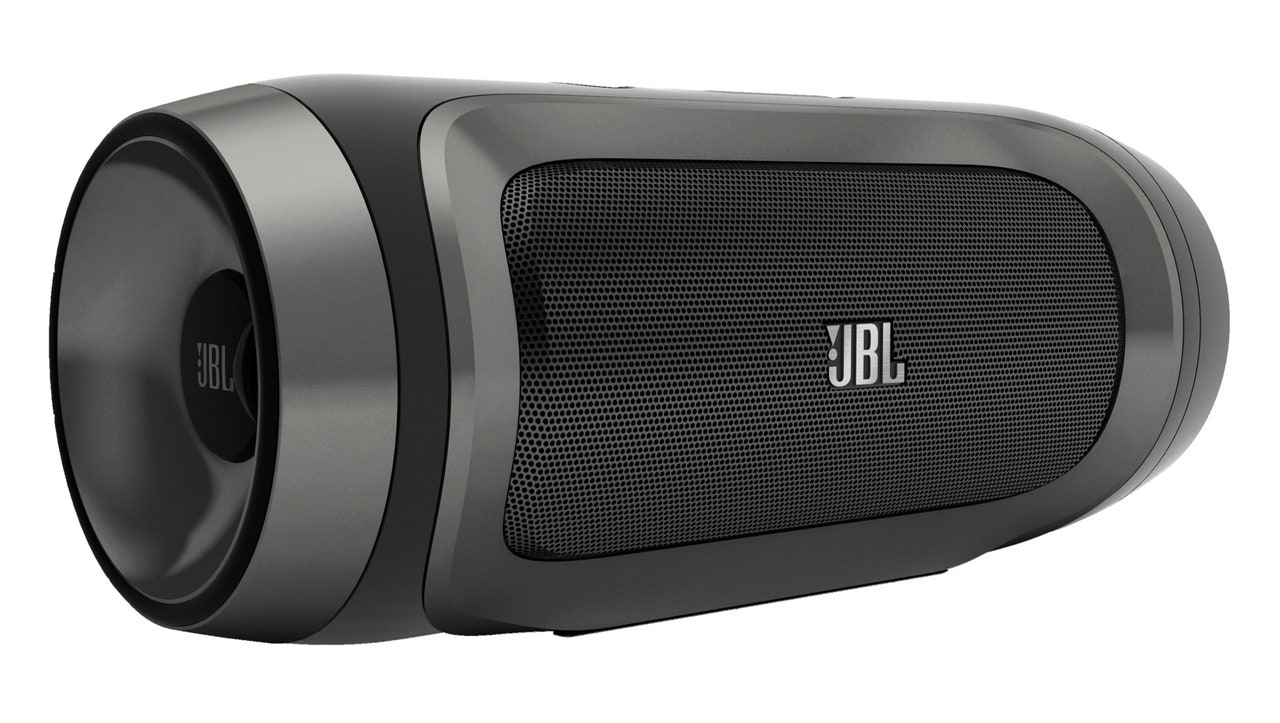With music, it's often what you don't hear that tells you whether it's any good. The absence of good orchestration or arrangements, or the lack of tonal quality in a voice, means the band/artist probably should have spent more time in the studio (or possibly in rehab).
Such is the case with portable speakers — especially those that connect wirelessly via Bluetooth. You can only pack so much instrumentation into a small device, and the Bluetooth wireless signal has its shortcomings as well.
The JBL Charge has a lot going for it on paper. The micro-sized speaker, which measures about 2 by 6 inches (a bit bigger than the $200 Beats Pill but smaller than the $200 Logitech UE Boom) has a battery which lasts 12 hours. Yet, while you might not notice at first, there's something missing besides heft. Unfortunately, to go small in size, you also lose a lot in audio quality.
The Charge sports a unique design. It's not just an elongated tube like the UE Boom, but instead has some extra hinged accents. On one end, there's a USB port for charging a USB-powered device. You can expect to charge an iPhone 5 twice using the Charge's battery. If you're only playing music, the Charge lasts about 12 hours; long enough for a day at the beach and a few hours back at the palapa. The availability of black, orange or blue models ups the style quotient for Bluetooth speakers.
There's a micro-USB port, but it's tucked away behind the speaker, making it a little hard to find. The Charge is designed to be used horizontally or vertically, resting on its built-in stand, or with the bass port — which produces lush, low-range audio — facing up. One minor glitch: Since the USB charge port is on the other end, you can't connect a device and use the speaker in a vertical position at the same time.
The speaker has two 1.625-inch drivers pumping out sound at 5 watts each. JBL says there's a digital signal processor that adjusts your music for the best sound. Unlike some speakers which uses the newer aptX codec to improve the sound quality of audio streamed over Bluetooth, the Charge relies on regular old Bluetooth, so the sound isn't a clear.
And that drop in sound quality is the big gotcha. I missed the lush drums and heavy bass of dance-pop tunes by Rone. I use this music as a test of overall tonal quality. Where the drums should have sounded distinct mid-song, on the Charge they came out mushy. In another test, I played an entire pre-release album by acoustic-folk band Civil Wars. Outdoors, on the Charge, the record sounded indistinct, lacking its old-timey twang.
A final test sealed my verdict on the Charge. The Born Cages song "Metaphor" starts with a mandolin that on the Charge sounded like a guitar. Other speakers in the $150-$200 price range broadcast the song as it should sound. The Charge is definitely missing fidelity. If you want to hear a wide range of sound on a portable device, there are better options. Step up in size to something like the Big Jambox ($300) or the Wren V5PF ($400), and you'll notice a major improvement.
The best thing about the Charge is the price — so if you're not a freak for fidelity and need to save cash, it might make sense.

